
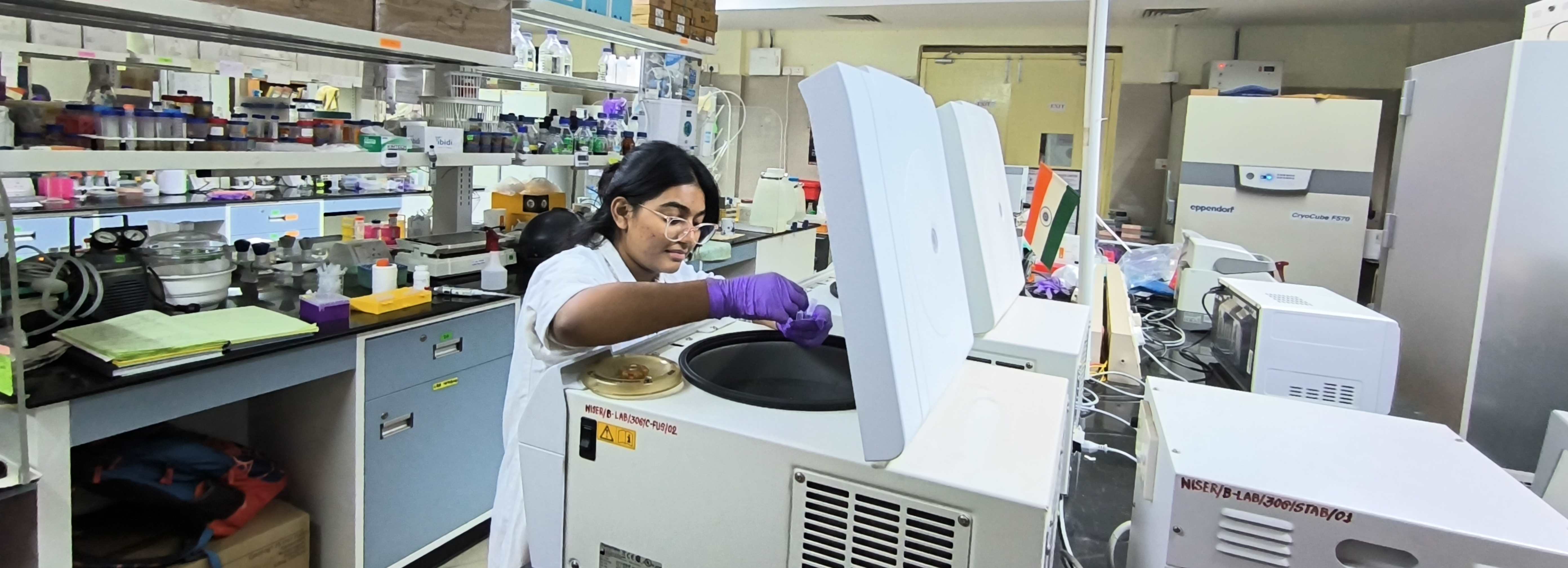

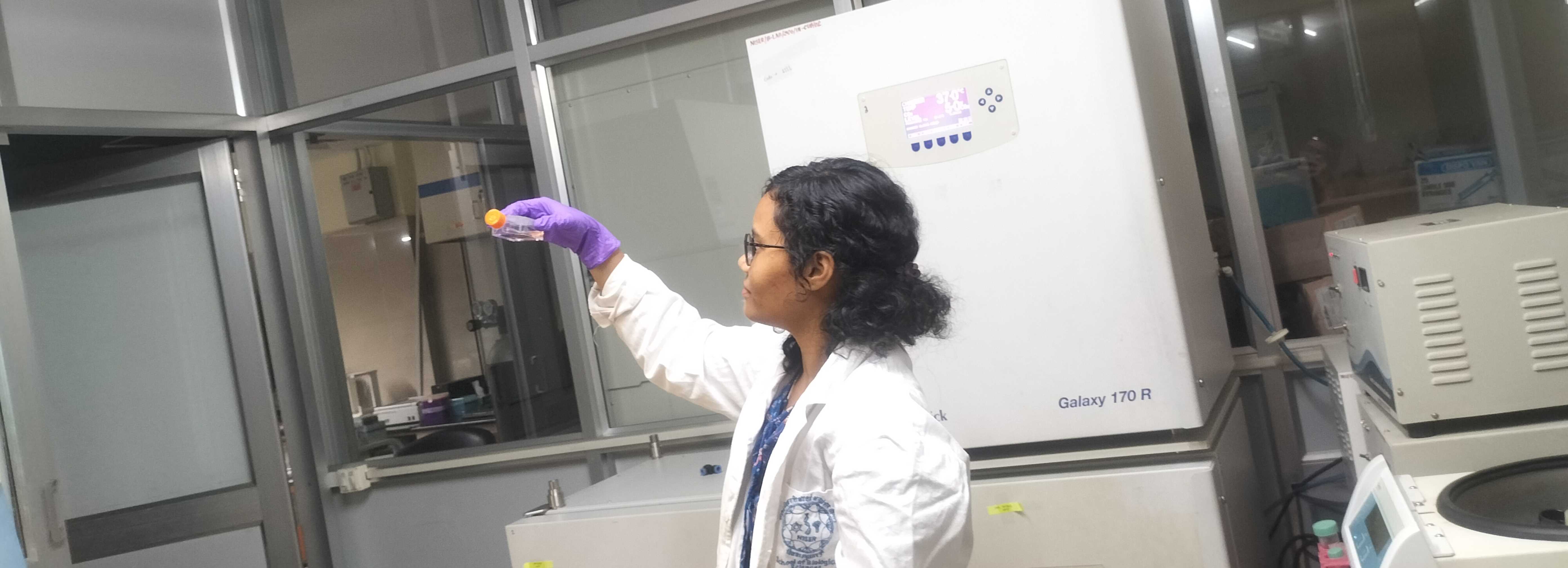



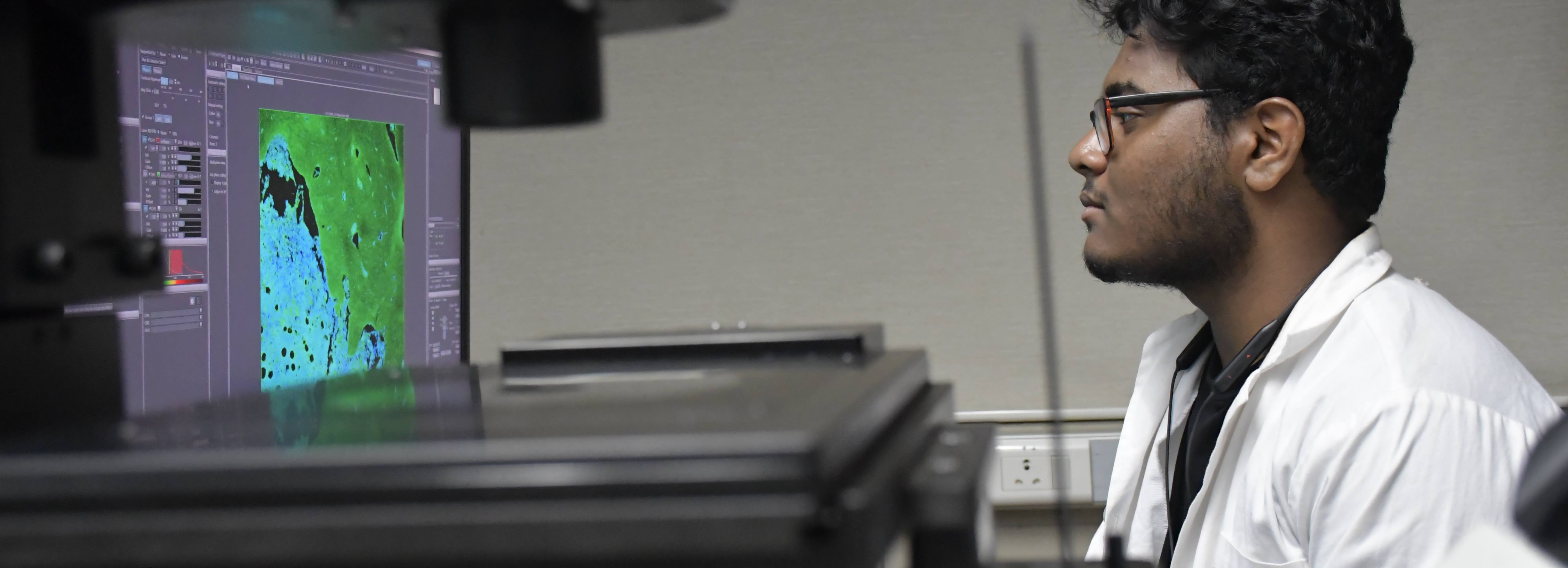
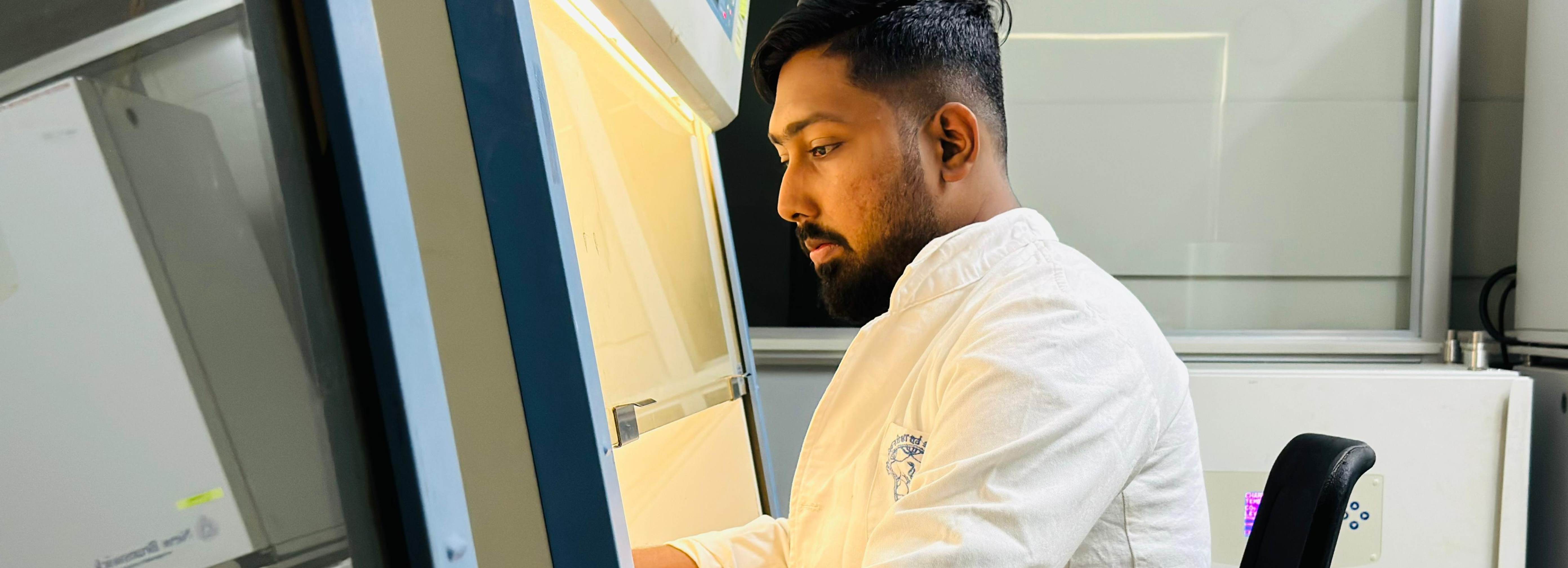
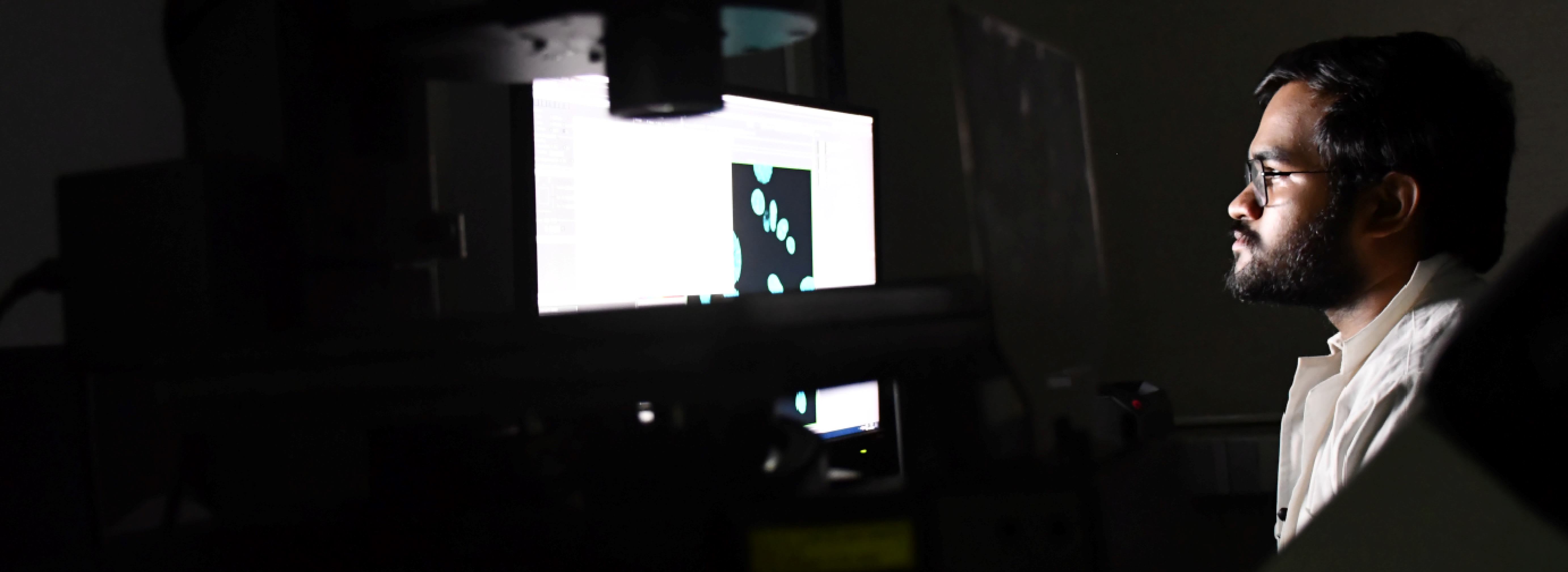
Research

Molecular mechanisms of sensory transduction and ion channel signaling
Sensory transduction is the process by which sensory stimuli are converted into electrical signals in the nervous system. TRP channels play a crucial role in this process by regulating the flow of ions in response to various sensory inputs such as temperature, pressure, taste,vision and pain. We are investigating the molecular mechanisms underlying sensory transduction and ion channel signaling, with a particular focus on TRP channels.

Crosstalk between TRP channels and the cytoskeleton in the pathophysiology of pain
Several recent reports suggest that different cytoskeletal elements as well as multiple receptors recognizing noxious stimuli contribute to pain signaling. Key molecular factors which are involved in acute and chronic pain have been identified which include TRP receptors. Interestingly, the involvement of the cytoskeletal microtubules in the chronification of pain has been speculated for a long time. We are the first to demonstrate the physical interaction between TRPV channels and the microtubule cytoskeleton.

TRP Modulators in Osteoclastogenesis
Bone related disorders such as osteoporosis have become a global health issue. Calcium homeostasis plays a pivotal role in the differentiation and maturation of bone cells such as osteoclasts. Our work examines the role of TRPs in osteoclast function and differentiation. We demonstrate that endogenous TRPV1 is instrumental in regulating the calcium influx crucial for osteoclast differentiation.

Importance of TRP channels in reproduction
Ion channels have a significant role in sperm physiology. In this work, we are exploring the localisation and functioning of thermosensitive TRP channels in mammalian sperm. We are trying to identify the changes due to the modulation of these ion channels by using endogenous as well as exogenous modulators. We are using tools and techniques like CASA (Computer Assisted Semen Analysis), Confocal Microscopy, Super Resolution Microscopy, etc.

Role of TRPs in immune response against bacterial infections
Involvement of TRPs in different skin functions is well reported. Our work demonstrates the importance of TRPV3 in skin wound healing and bacterial clearance. We report, for the first time, the endogenous expression of TRPV3 in macrophages. Our results indicate the role of TRPs as regulators of lysosomal functions as well as lysosomal storage disorders. Our findings also imply the action of TRPs as probable sensors of cellular stress. These outcomes may have broader implications in understanding cellular stress mechanisms and TRP channelopathies may have clinical relevance in bacterial infection treatment.

Role of TRPs in regulation of subcellular metabolism
TRPs are associated with the development of various symptoms and disorders such as neuropathic pain, sensory defects, muscular dystrophies, neurodegenerative disorders, skeletal dysplasia and skin disorders. In all these cases, abnormalities of organelles such as ER, mitochondria and lysosomes are prominent. We demonstrate that TRP channels localize to various subcellular locations in varied cell lines. Improper expression and/or function of TRPs induce several organellar defects. TRPs are also involved in the regulation of ER and mitochondrial metabolism. These findings may aid in unraveling the significance of organelles in TRP-mediated channelopathies, possibly classifying them as organellar diseases.

Role of TRP channels in establishing inter-organellar contact points
Organellar metabolism including organelle distribution and calcium buffering abilities are relevant to the pathophysiology of several diseases and yet are poorly understood events. TRP channels are reported to regulate cellular and subcellular calcium levels, especially that of the ER, mitochondria, etc. The underlying mechanisms of the change in organellar dynamics upon modulation of TRP channels are ill explored. Our research sheds light into inter-organellar interactions at the single cell level. Our findings reveal the mechanisms of the establishment of ER-mitochondria contact by TRPs.

The Role of TRP Channels in Tumor Microenvironment
The tumor microenvironment is a complex system that includes cancer cells, immune cells, fibroblasts, and the extracellular matrix. TRP channels have been implicated in various aspects of cancer biology, such as cancer cell migration, proliferation, and the interaction between cancer cells and the immune system. Understanding the roles of TRP channels in the tumor microenvironment is essential for developing novel cancer therapies.

Functional importance of thermosensitive TRP channels in inflammatory conditions
Inflammatory disease conditions such as colitis, arthritis, neuronal inflammation, asthma, inflammatory bowel disease (IBD), brain inflammation, COPD and autoimmune diseases involve various cellular functions that implicate the role of thermosensitive TRP channels. Elucidating the role of these channels in diseased conditions will pave the way to novel therapeutic approaches.

Regulation of vesicular recycling by TRP channels.
Receptor-mediated uptake, exocytosis, endocytosis, vesicle trafficking and recycling are complex cellular events which control several cellular functions. For neurons, such functions in turn control synaptic functions, release and/or uptake of specific neurotransmitters. Regulation of vesicular recycling also regulates the neuronal structures and connectivity. Interestingly, different thermosensitive TRP channels regulate these aspects in a very specific and unique manner. Using high-end imaging techniques we characterize these TRP-mediated vesicular recycling and membrane organization. Such understandings have broad importance in different neuronal as well as non-neuronal systems and have immense implications to dissect pathophysiological disorder at the cellular and molecular levels.

TRP channels in immune functions.
Immune activation is a temperature dependent event and also needs massive Calcium influx. Indeed, so far several reports have suggested that TRP channels are present in the immune cells where diverse immune functions are regulated by this group of proteins. We investigate the importance of thermosensitive TRP ion channels in mammalian immune systems.
Fundings
We gratefully acknowledge the extramural research funding from the DAE, DST, DBT, ICMR, CSIR-UGC and NISER.





